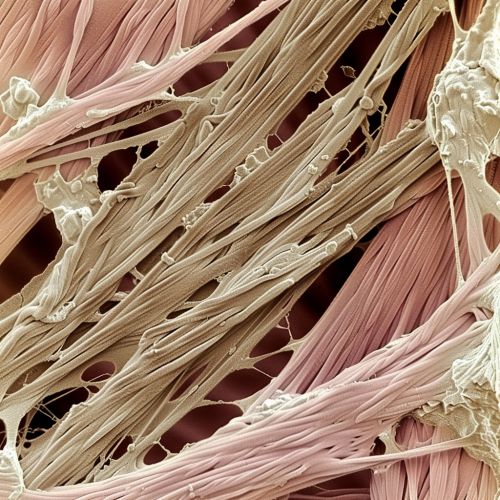Neuromuscular diseases
Overview
Neuromuscular diseases are a heterogeneous group of disorders that are characterized by the progressive degeneration and weakness of skeletal muscles. These diseases can be inherited, as in the case of muscular dystrophies, or acquired, such as in myasthenia gravis. The severity and progression of these diseases can vary widely, from mild conditions that cause minimal disability to severe diseases that lead to significant impairment and even death.


Classification
Neuromuscular diseases can be broadly classified into four main categories: motor neuron diseases, peripheral nerve diseases, neuromuscular junction diseases, and muscle diseases. Each of these categories includes several different disorders, each with its own unique characteristics and manifestations.
Motor Neuron Diseases
Motor neuron diseases are characterized by the degeneration of motor neurons, the nerve cells that control voluntary muscle movement. This category includes disorders such as amyotrophic lateral sclerosis (ALS), spinal muscular atrophy (SMA), and progressive bulbar palsy (PBP).
Peripheral Nerve Diseases
Peripheral nerve diseases, also known as peripheral neuropathies, involve damage to the nerves outside the brain and spinal cord. These disorders can affect motor, sensory, or autonomic nerves and include conditions such as Charcot-Marie-Tooth disease, Guillain-Barré syndrome, and diabetic neuropathy.
Neuromuscular Junction Diseases
Neuromuscular junction diseases are disorders that affect the synapse, or junction, between the motor neuron and the muscle fiber. These include conditions such as myasthenia gravis and Lambert-Eaton syndrome.
Muscle Diseases
Muscle diseases, also known as myopathies, involve primary dysfunction of the muscle fibers. This category includes a wide range of disorders, such as muscular dystrophies, inflammatory myopathies, and metabolic myopathies.
Pathophysiology
The pathophysiology of neuromuscular diseases is complex and varies widely depending on the specific disorder. However, all neuromuscular diseases involve some form of disruption to the normal functioning of the neuromuscular system, which includes the motor neurons, peripheral nerves, neuromuscular junction, and muscle fibers.
In motor neuron diseases, the primary pathology involves the degeneration of motor neurons in the brain, spinal cord, or both. This leads to a loss of the nerve impulses that control muscle movement, resulting in muscle weakness and atrophy.
In peripheral nerve diseases, the pathology involves damage to the peripheral nerves, which can affect motor, sensory, or autonomic function depending on the specific nerves involved. This can lead to symptoms such as muscle weakness, sensory changes, and autonomic dysfunction.
In neuromuscular junction diseases, the pathology involves a disruption of the normal transmission of nerve impulses across the neuromuscular junction. This can be due to an autoimmune attack on the neuromuscular junction, as in myasthenia gravis, or a disruption of the release of the neurotransmitter acetylcholine, as in Lambert-Eaton syndrome.
In muscle diseases, the pathology involves a primary dysfunction of the muscle fibers. This can be due to genetic mutations that affect the structure or function of the muscle fibers, inflammation of the muscle tissue, or metabolic abnormalities that affect the energy supply to the muscle fibers.
Diagnosis
The diagnosis of neuromuscular diseases typically involves a combination of clinical evaluation, laboratory testing, electrophysiological studies, and sometimes muscle or nerve biopsy. The specific tests used will depend on the suspected diagnosis and may include blood tests, genetic testing, nerve conduction studies, electromyography, and imaging studies such as MRI.
Treatment
The treatment of neuromuscular diseases is largely symptomatic and supportive, as there are currently no cures for these disorders. Treatment strategies may include physical therapy, occupational therapy, speech therapy, respiratory therapy, and the use of assistive devices to improve function and quality of life. Medications may be used to manage symptoms, slow disease progression, or treat underlying causes in some cases. In certain conditions, surgical interventions such as thymectomy in myasthenia gravis or spinal surgeries in certain muscular dystrophies may be beneficial.
Prognosis
The prognosis of neuromuscular diseases varies widely depending on the specific disorder. Some conditions, such as certain types of muscular dystrophy, can lead to significant disability and shortened lifespan, while others, such as mild peripheral neuropathies, may cause minimal disability and have little impact on lifespan.
